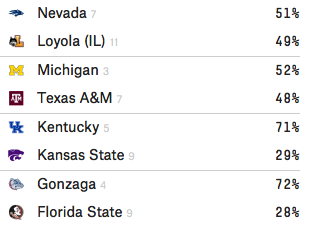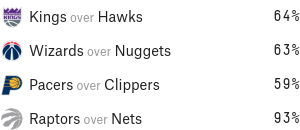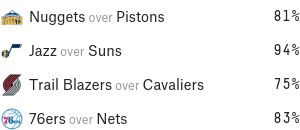On average, more than 300,000 Americans experience rape or sexual assault each year. When the #MeToo movement makes headlines, those survivors are reading. How is that affecting people who have experienced sexual violence, to see stories similar to their own blasted across media outlets every day? Experts aren’t sure, but they’re confident that it’s having some kind of impact.
Case in point: In the last three months of 2017, calls to the Rape Abuse and Incest National Network — a national crisis hotline for people who have experienced sexual trauma — increased by 23 percent compared with the same period in the previous year. That increase is part of an apparent nationwide jump in sexual abuse victims seeking help from crisis centers. Experts believe there’s a connection between the increase and the rise of #MeToo, which was founded more than a decade ago but took off as a hashtag in October after reports of workplace abuses committed by the rich and powerful drew media attention to the stories of survivors of sexual assault and harassment.
So are more people calling the hotline now because they feel like #MeToo means they can tell their story and be believed? Or are more people calling the hotline because #MeToo reminded them of their own, personal, pain and now they’re suffering all over again? In short, we can’t say. But the clues left in the stories survivors tell and in the research that exists on the way people respond to trauma suggest that it’s probably a little of both.
In conversations with survivors of sexual assault, I learned that the impacts of #MeToo are complex, with the potential to heal or retraumatize — and sometimes both at the same time. On the one hand, being able to talk about their experiences has been healing for the survivors I spoke to — especially when they could do it in a context that allowed them to reach out to other survivors and help each other.
“There are so many people who have never told anyone” about their abuse, said Kesha Brown Booker, a rape survivor who speaks to universities, churches and other groups through the speakers’ bureau network of RAINN. But then they hear what she has to say. “I speak, and tell my story, and they feel like this person understands and gets it.”
The potential positives of seeing #MeToo stories in the media seem to line up with what experts have learned about trauma and the process of healing from post-traumatic stress disorder.
In the first few weeks after an assault, as many as 94 percent of survivors may experience symptoms of PTSD, including nightmares and flashbacks. But most of those people will slowly heal on their own. They won’t “get over it” — but they do become able to live without pain and don’t develop long-term PTSD, said Edna Foa, who is a professor of psychology at the University of Pennsylvania and one of the leading experts on sexual assault and trauma. Even while a minority do end up with longer-term problems, Foa said, they, too, can find relief through treatment. The #MeToo movement appears to be tapping into patterns researchers have seen that predict whose symptoms will dissipate naturally over time and what it takes to help those who seek treatment.
“We think that social support is a key protective factor against the development of PTSD,” said James Hamilton, professor of psychology at the University of Alabama. It helps explain why most survivors heal naturally over time. So, hearing other survivors of sexual violence talk about their experiences on social media and watching high-profile abusers lose jobs or go to jail could be helpful. It could give survivors a sense that they are part of a community, not foundering alone in dark water. And, Foa said, knowing that it’s possible to think about, or even talk about, what happened without experiencing immobilizing emotional distress is often a first step on the road to recovery for those who struggle with PTSD long term.
But beyond personal experiences, experts know very little about how watching strangers talk about sexual assault in social or traditional media affects people — especially people who have, themselves, experienced similar traumas. Neither Foa nor any other experts I spoke with could think of any studies that looked specifically at this issue.
There is some research that is tangentially connected. For instance, a 2006 study found that crime victims who read about their own cases in the newspaper or saw coverage on TV experienced high rates of negative emotions afterward — 66 percent reported sadness, 48 percent reported fear.
Indeed, the same survivors who told me that #MeToo had been empowering for them also told me that it had been, at times, a painful and retraumatizing reminder of their experience. That was true for Booker. That was also true for Jay Wu, a survivor and communications manager for the National Center for Transgender Equality. Wu identifies as a non-binary gender and uses the pronoun “they.” “I think partly it’s just the nature of talking about things like this,” they said.
Other studies suggest that media exposure to a trauma that isn’t your own can also be stressful. A survey of more than 2,000 New Yorkers after 9/11, for example, found that people who viewed the most television had a 66 percent greater chance of experiencing PTSD-like symptoms, even though three-quarters of the respondents did not see the disaster first-hand.
It’s unlikely that media exposure alone can cause PTSD, said Blair Wisco, professor of psychology at the University of North Carolina at Greensboro. At the same time, she said, studies have shown that therapists, first responders and others whose jobs expose them to scenes of trauma do have an increased risk of a sort of vicarious PTSD.
It’s also the case that, positive or negative, #MeToo media coverage is likely to affect people and groups differently. The survivors I spoke with emphasized that some of how #MeToo affects people is tied up in whether those people can see the movement as working for them — or being about them at all.
Transgender people, for example, have a higher probability of experiencing sexual assault or violence than the general U.S. population. A large 2015 survey found that nearly half of all trans people had been sexually assaulted.In contrast, previous surveys that split respondents into “male” and “female” categories and were not intended to capture trans experiences found that 1 in 6 American women and 1 in 33 men had experienced rape or a rape attempt.
‘>1 But, Wu said, trans people have often been left out of #MeToo media narratives that center on cisgender women, people whose female gender identity matches the sex they were recognized as having at birth. Some trans survivors have told Wu that #MeToo presents an opportunity to get trans stories out there. But for others, Wu said, it’s just another cultural moment that ignores their existence and their pain.
And that issue — whether all survivors feel like the community #MeToo is building is really for them — could have wide-reaching consequences for mental health. Booker spoke about this concern. So did Constance, another RAINN speaker and rape survivor who asked that her last name not be used. The media narrative has focused on wealthy, professional, culturally prominent, cisgender, white women, these survivors told me.
“The actors and models coming out, they’re being heard and taken seriously, but other individuals are not,” Booker said. “If you aren’t in a particular industry or don’t have the money, you’re dismissed.” If the psychological benefits of #MeToo are centered around creating a feeling of not being alone and building an atmosphere where survivors are believed, then it’s important to know that not all of them are receiving that message.



